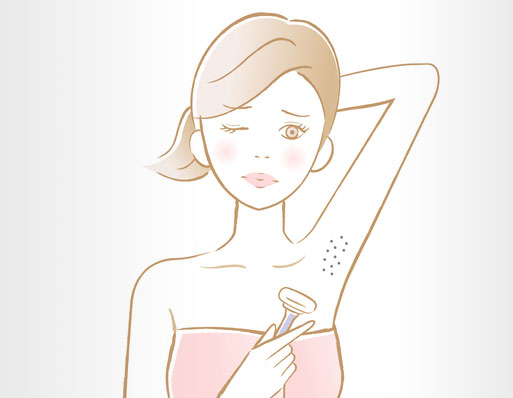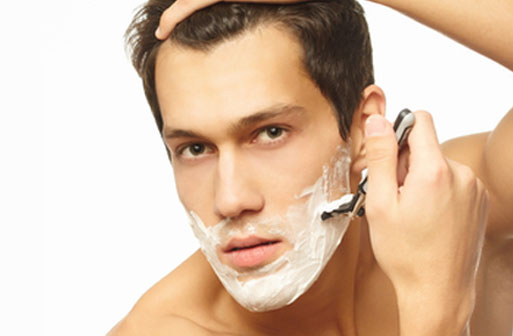How to Prevent Razor Bumps– Since this is not supposed to happen, your immune system will consider the “ingrown hair“ an intruder and try to find ways to fight it. This reaction by your body usually causes red, inflamed bumps on the skin’s surface.
These pimple-like spots can be tender, painful, or itchy and in some cases, may become infected or pus-filled. If not treated, razor bumps can sometimes spread to become an irritating rash and, in severe cases, may even cause scarring.
Although anyone can be affected, razor bumps are most common in people with thick curly hair and are more prevalent among African Americans and Hispanics. Typically, it is a more significant issue for men than women since men usually have coarse facial hair that is shaved daily.

In the past, most doctors and dermatologists recommended that people affected by razor bumps stop shaving until their skin cleared. This is not always a good option. Some men grow spotty, scraggly beards and prefer to be clean-shaven. And, let’s face it, how many women want to go to the beach with hairy underarms?
Besides, while this may give the skin a chance to heal, razor bumps will usually return as soon you start shaving again.
Over the years, several methods have been used to help prevent razor bumps, but not all of these treatments have been effective for everyone.
Topical creams and lotions: Many people claim to have found some relief when using lotions that contain anti-inflammatory, anti-bacterial, or antibiotic agents. In some cases, cortisone or other prescription drugs have been effective, and one study shows promising results for using glycolic lotions. Unfortunately, these treatments usually have to be applied daily, and long-term use is expensive and may cause other adverse side effects.
Waxing, Plucking, and Tweezing: Razor burn or irritation after shaving can sometimes lead to razor bumps, so people with susceptible skin often prefer waxing or plucking. However, similar to shaving, these methods may also result in sharp-pointed hair tips that can cause ingrown hairs, particularly in people susceptible to thick or curly hair.
Depilatories: Hair removal creams leave rounded tips that are less likely to curl back and grow into the skin or follicle; however, they usually contain many strong chemicals that can cause irritation and rashes. And, they often smell awful!
Laser hair treatment kills hair follicles, significantly reducing the amount of hair growth in any particular area. In most cases, any re-growth is much thinner and finer, reducing the likelihood of developing ingrown hairs or razor bumps. Some people have even reported fading scars caused by previous razor bumps.
Yes, treatments can be costly, but so can the need for prescription creams and lotions. And laser hair removal can prevent razor bumps rather than simply treating the symptoms after they have appeared.

Laser hair removal requires a series of treatments over some time, depending on the area and how your skin reacts to the procedure. Because of the cost and time involved, it may be several weeks, or even months, before you enjoy the full benefits.
While saving pennies or waiting for treatment, you may still need to shave. But, by following a few tips, you can protect your skin and reduce the risk of developing razor bumps.
So, if you are tired of sore, red, irritated skin, contact a salon or treatment center and learn how to prevent razor bumps with laser hair removal.
To take the first step to a more confident you!